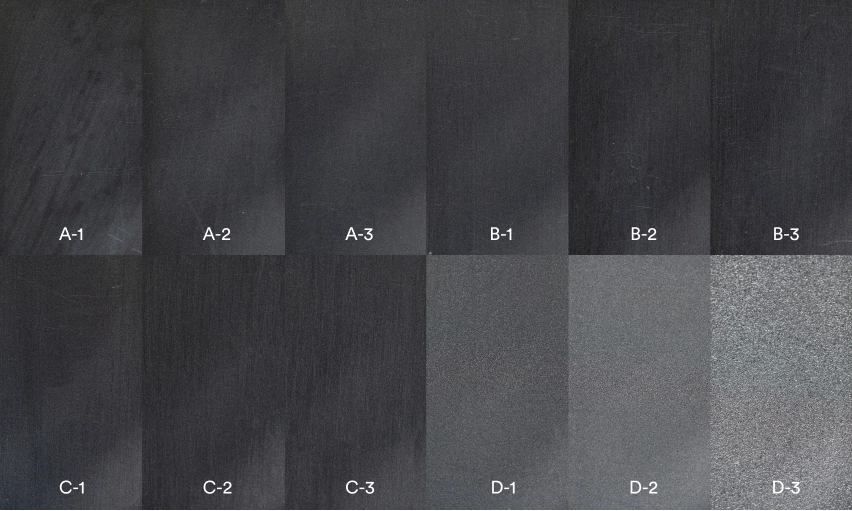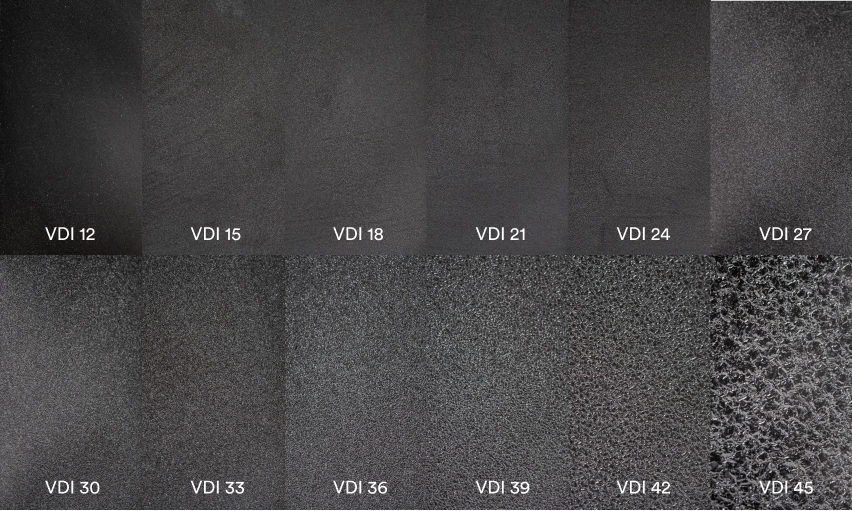Our CNC machining processing includes both CNC milling and CNC turning ,they are high-speed, precise manufacturing process that involves cutting away material from a block or billet to create parts.lt's controlled by written code, which dictates machine movements, spindle speed and more. This numerical control allows for automated, repeatable processes,.reducing human intervention,improve the parts precision in districtly . we have made lots of CNC machining parts for a wide range of company ,like Automotive, Aerospace & Defense, Medical, Construction Equipment, Power & Energy, Industrial and so on ,as we have the ability to control tolerance in high precison . We have a wide selections of material for CNC machining, The material of CNC Milling can be in various shapes. If the material is in rod or round shape, CNC turning can be selected Below are common plastic and metal materials. If customers provide specific materials, we also provide machine services. Plastic material and surface finished : most economical materials: ABS Transparent material: PC, PMMA, ABS High temperature resistant materials: PTFE, PPS, PPS+30%GF, PEEK, PEI,PBT, PET, PA6+30%GF etc

Metal material and surface finished : Aluminum alloy: AL6061-T6, AL7075-T6, AL5052-H32, AL6063 etc. Stainless steel: 304 SS, 303 SS, 316 SS, SS 430F, 301 SS etc. Copper ,Brass ,Bronze ,Tianium,Tungsten,magnesium and so on.

Sheet metal processing can be a cost-effective alternative to casting and machining. The process is also fast and produces minimal material waste Sheet metal processing is widely used in industrial and consumer parts, as well as automotive, aerospace, energy, robotics and other professional industries At our facility, we understand the importance of precision and accuracy in sheet metal fabrication. We strive to meet the highest standards and provide consistent quality to our clients. Our standard tolerances align with the ISO 2768-M guidelines, ensuring reliable and repeatable results We take pride in offering a wide selection of sheet metal materials to cater to the diverse needs of our clients. Our range includes various gauges of high-quality metals that are commonly used in sheet metal fabrication.
metal stamping (metal working or pressing) is the process of placing flat sheet metal in either blank or coil form into a stamping press where a tool and die surface forms the metal into a net shape. Stamping includes a variety of sheet-metal forming manufacturing processes, such as punching using a machine press or stamping press, blanking, embossing, bending, flanging, and coining. Stamping area: Up to 4000 x 6000 mm Material thickness: Up to 60 mm
Tips from your reliable machinery parts manufacturer: Laser cutting is a technology that uses a laser to vaporize materials, resulting in a cut edge. A commercial laser for cutting materials uses a motion control system to follow a CNC or G-code of the pattern to be cut onto the material. The focused laser beam is directed at the material, which then the material either melts, burns, vaporizes away, or is blown away by a jet of gas, leaving an edge with a high-quality surface finish. Cutting area: Up to 4000 x 6000 mm Material thickness: Up to 60 mm
Plasma cutting is a process that cuts through electrically conductive materials utilizing an accelerated jet of hot plasma. Typical materials cut with a plasma torch include steel, stainless steel, aluminum, brass, and copper, although other conductive metals may be cut as well. CNC plasma cutting configurations:2-dimensional / 2-axis plasma cutting,3-dimensional / 3+ axis plasma cutting. Cutting area: Up to 4000 x 6000 mm Material thickness: Up to 40 mm
OEM CNC milling parts manufacturer sing the principle of liquid pressurization, the mechanical energy of the power source is converted into pressure energy through a specific device. The water with huge pressure energy passes through the small hole nozzle, and then the pressure energy is converted into kinetic energy to form a high-speed jet. It can cut all kinds of materials using an extremely high-pressure water jet or a mixture of water and abrasive materials. Maximum cutting area: Up to 3000 x 6000 mm material thickness: Up to 350 mm
Bending can process complex parts with less waste in the production process. The product has sufficient shape and dimensional accuracy, good interchangeability, and high surface quality. Metal folding capacity: Up to 200 tons Maximum bending length: Up to 4000 mm Maximum thickness: Up to 30 mm
Sheet metal welding is to weld multiple parts together. The purpose of this is to achieve single piece seam welding and sheet metal processing, so as to increase its strength and achieve assembliing.
Aluminum: Aluminum 6061, Aluminum 5052 (which are widely utilized in numerous industries due to their lightweight nature, excellent conductivity, and superb formability.) Copper: Copper 101, Copper C110, Copper 260 (Brass) Bronze: Bronze 220, Bronze 510 (These materials are sought after for their exceptional electrical and thermal conductivity, as well as their malleability.) Stainless teel: Stainless steel 301, Stainless steel 304, Stainless steel 316/316L Steel: Steel 1018 (Low Carbon),SPCC ,SGCC and so on
Inexpensive but high-quality end-use sheet metal products.Sheet metal custom parts have the advantages of being lightweight, saving metal materials, simple processing technology, reducing production cost, and saving production cost.
Sheet metal fabrication is strong and durable, and sheet metal parts are often able to withstand greater pressure and heat than those made with plastic.
With the right equipment, it can be bent into numerous shapes, while still retaining its strength and structural integrity.
One of the biggest advantages of using sheet metal fabrication is that the parts are replaceable. If several metal parts are used to make an assembly, instead of making the whole part out of one substance, the individual components can be removed and replaced without having to replace the entire assembly. This can save money on repairs and even allow for modifications and upgrades.
Our 3D printing service can supply high-quality parts in competitive prices, from rapid prototyping with Fused Deposition Modeling (FDM) to functional end parts made with Selective Laser Sintering (SLS) or Multi Jet Fusion (MJF).
FDM (fused deposition modeling) 3D printing createscustom parts by heating and extruding thermoplasticslayer-by-layer. You can use FDM for initial andfunctional prototyping and low volume production in avariety of strong plastic materials. While FDM is themost affordable 3D printing technology, it's far morethan a small-scale manufacturing solution.3D printingwith FDM means getting access to thermoplastics,including PLA, ABS, TPU, PETG and PEl, and adimensional accuracy of +0.5% with a lower limit of±0.5 mm (0.0196”).
Prototyping PLA, PETG,ASA,ABS,TPU and so on , it is ideal for fast and affordable rapid prototyping and modeling.
VFDM is the most cost-effective way to produce customthermoplastic parts and prototypes. VLead times are short (typically a few days). A wide range of materials is available, suitable forprototyping and industrial applications.
VFDM is not suitable for parts with very small details due toits low resolution. Parts are likely to have visible layer lines, so post-processing is required for a smooth finish. VThe layer adhesion mechanism makes parts inherentlyanisotropic.
Selective Laser Sintering (SLS) is an industrial 3D printing process that is ideal for manufacturing end-use parts. In SLS, a laser selectively sinters polymer powder particles, fusing them together and building a part layer-by-layer. With some of the largest print beds, SLS machines can produce functional plastic parts with isotropic mechanical properties for detailed prototyping or low-volume production of end-use parts. SLS is a cost-efficient production method, which our customers regularly choose for the most complex parts and those requiring extensive customization SLS material :Nylon (PA ) ,Glass-filled Nylon (PA +GF) It is robust powder materials that are ideal for functional prototyping and low- to-medium volume production of end-use parts.
No support material is needed Excellent layer adhesion Fast printing process for functional, durable prototypes or end-use parts Materials have good mechanical properties
As-printed parts are rough to the touch due to surface porosity SLS is prone to shrinkage and warping, especially on long, thin parts
an advanced 3D printing process that can speedily produce accurate, complex and detailed parts from powdered thermoplastics. MJF parts have high tensile strength and fine feature resolution, making them perfect for complex industrial parts.
uses strong, versatile PA material ,a lot of leading companies across many industries use MJF for its industrial-grade materials
VMJF is excellent for building strong parts, with maximum tensile strengths of XY and Z 48 MPa/6,960 psi with the ASTM D638 method. VMJF is ideal for producing parts with complex mechanical properties across all geometries. MJF's more robust automation capabilities reduce the need for most post-processing. VMF provides quicker build speeds in comparison to other technologies,even with larger quantities of parts
Printing with MJF will yield high-quality parts, though the cost may be considerably higher than with other technologies. Limited materials available. HP may expand the range in the future
also known as resin 3D printing, is a 3D printing technology that produces parts with high resolution and accuracy, fine details and smooth surface finishes. Part of the vat photopolymerization printing family, SLA technology uses photosensitive thermoset polymers to produce custom parts.
Ideal for accurate visual prototypes with smooth surface finishes. Formlabs Standard Resin Formlabs Grey Pro Resin Formlabs Clear Resin Formlabs Durable Resin Formlabs High Temp Resin Formlabs Tough Resin 2000 Formlabs Rigid Resin 4000
SLA can produce parts with very high dimensional accuracy and intricate details. SLA parts have a very smooth surface finish, making the mideal for visual prototypes. Speciality SLA materials are available, such as clear,Hexible and castable resins.
SLA parts are generally brittle and not suitable for functional prototypes, though industrial SLA can produce more functional components for this stage. The mechanical properties and visual appearance of SLA parts will degrade over time when the parts are exposed to sunlight. Support structures are always required and post-processing is necessary to remove the visual marks left on the SLA part
Vacuum casting, sometimes referred to as Urethane casting or Polyurethane casting uses silicone moulds to make plastic and rubber components under vacuum. It is an extremely adaptable manufacturing process capable of mimicking the injection mouling to produce complex parts in polyurethane resins and cast nylon. Due to the process being under vacuum, it produces high-quality bubble-free casting with smooth surface texture without any blemishes. Vacuum casting can be extremely useful in rapid prototyping injection moulding parts and worth considering when selecting rapid prototyping processes for plastic or rubber parts.as it mould cost and processing time is competitive then injection mould .
Injection molding uses a huge range of plastics, making it ideal for many applications across nearly every industry.it consists of the high pressure injection of the raw material into a mould, which shapes the polymer into the desired form. Moulds can be of a single cavity or multiple cavities. In multiple cavity moulds, each cavity can be identical and form the same parts or can be unique and form multiple different geometries during a single cycle. Moulds are generally made from tool steels, but stainless steels and aluminium moulds are suitable for certain applications. Aluminium moulds are typically ill-suited for high volume production or parts with narrow dimensional tolerances, as they have inferior mechanical properties and are more prone to wear, damage, and deformation during the injection and clamping cycles; however, aluminium moulds are cost-effective in low-volume applications, as mould fabrication costs and time are considerably reduced.Many steel moulds are designed to process well over a million parts during their lifetime.
Property Materials Impact resistant ABS, PMMA, PVC, PE, PC Wear-resistant POM, PEEK, UHMW Dimensional stability ABS, PBT, HIPS, PPS Chemical resistance PEEK, PP, PBT, PE, LDPE, PA Rubber like TPU, TPE, Silicone Cost-efficient PP, HDPE, LDPE Cosmetic ABS, PC, HIPS
Injection mould surface finished :SPI texture and VID texture

